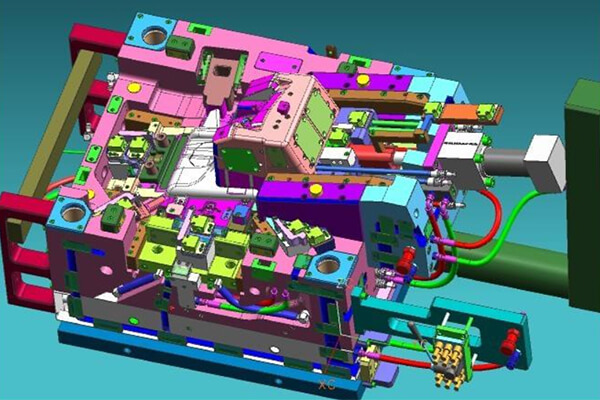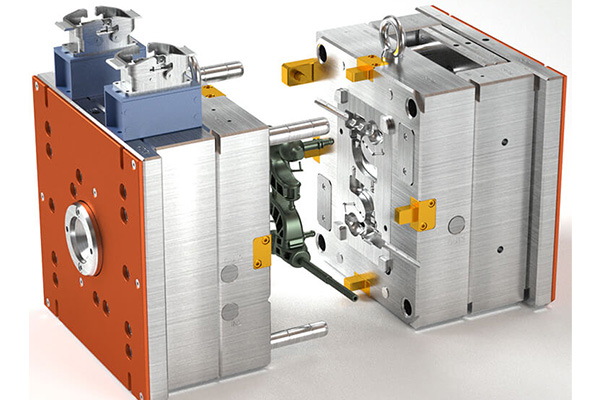Tooling Design: Best Manufacturing Tooling Tips
A vast variety of specialized tools are employed in the manufacturing process to manufacture a variety of items, from vehicles to consumer goods. We wish to concentrate on molding tooling and outline how they differ from other equipment available in industrial workshops due to their wide variety of types and applications.
Raw materials can be given a precise shape using molding tools. The manufactured part’s geometric shape is determined using a template provided by the tool’s physical geometry.
Developers must address tool design early in the development stage because it directly affects the production cycle and cost of a project.
Sungplastic is good at tooling manufacturing and tooling design. Let’s look at the process for doing this.

What is Manufacturing Tooling?
Manufacturing tooling encompasses a range of accessories, fixtures, jigs, dies, molds, mills, and cutters used to shape raw materials during mass production of finished goods. These tools can be categorized into two types: generic and custom-made.
Generic tooling can perform the same task on different workpieces, regardless of the material or shape involved. On the other hand, custom-made tooling is specifically designed to carry out a particular function for a specific finished or semi-finished product.
The term “tooling” can refer to both the tools themselves and the process of designing and fabricating them. Tools play a vital role in the production process, and a “tool and die maker” is considered the pinnacle of the machinist’s trade.
Forming tools, which determine the physical geometry of a product, differ from secondary tools like holding jigs and clamps. While holding and alignment tools are important for various operations, their form and function are independent of the parts they produce, and product designers typically have limited control over them, except in special cases.
Holding fixtures and clamps are typically part of the manufacturer’s general machinery and equipment. However, bespoke tools like a customized plastic injection mold belong to the customer and represent a significant portion of their production expenses. Consequently, product designers have a strong incentive to minimize tooling costs while maximizing the return on their tooling investment.

Why is Tooling Design Important in Manufacturing?
Tooling design plays a crucial role in the manufacturing process for several reasons. First and foremost, each tool is specifically designed to carry out a particular task on a semi-finished item. While the number of possible tasks is practically limitless, the ultimate goal remains the same: Did the tool effectively and efficiently create the desired feature or perform the intended task with speed, accuracy, and cost-effectiveness?
Both the manufacturer and the end customer have a vested interest in saving production time and reducing costs. However, achieving these objectives often involves trade-offs between speed, cost, accuracy, and quality. This holds true not only for the finished parts but also for the tools used in their production.
Therefore, giving due attention to tooling design well before the production stage is of utmost importance. By investing careful consideration during the design phase, manufacturers can ensure optimal tool performance and avoid unnecessary costs when it comes time to manufacture the parts. This proactive approach is the most effective way to achieve superior performance and cost savings in the long run.
Tooling Design
The fundamentals of tooling design encompass several key factors that product developers need to consider in collaboration with their manufacturing provider. While it is not possible to cover every tooling design decision, we can focus on discrete categories that are applicable to all tools, regardless of their function.
Tooling Material
Selecting the appropriate tooling material is crucial in tooling design . The ideal raw material for a production tool depends on factors such as the desired performance, cost-effectiveness, production volume, time frame, and required precision. Different applications may require specific materials. For example, aluminum can be suitable for plastic injection mold tools, but not for cutting mills in CNC machines. Manufacturers can provide guidance based on practical experience and the specific requirements of the application.
Production Volume and Durability
High-volume production necessitates durable tools to avoid the expense of creating multiple tools for a single production run. Durable tools should be made from tough metals capable of withstanding repeated stress and plastic deformation without tearing or permanent shape alteration. They should also maintain tolerances over an extended period, resist thermal, chemical, and mechanical breakdown, and have a longer lifespan despite being more expensive to fabricate.
Tolerance and Precision
Tools used for precise finished parts require meticulous manufacturing. These tools may be more expensive to produce and require more frequent replacement or maintenance to uphold tolerances. Well-crafted tools can often be resharpened, repaired, or calibrated to extend their effective lifespan.
Cycle Times
Consider the frequency at which the tool will be used during normal production. Tools used for processes like pressure die casting or sewing needles will have different cycle times. Reducing cycle times improves processing speed but can potentially lead to premature wear or breakage. Thin film coatings such as chrome plating, nickel plating, physical vapor deposition, or chemical vapor deposition can enhance tool longevity and performance but incur additional costs that should be balanced against productivity gains.
Tool Changing Time
The efficiency of tool changing, including servicing or replacement, is often overlooked. Large tools like injection molds may require hoists and cranes for movement and can take hours to replace. Efficient tool changing is a cost driver, as production workers are paid during this time despite no parts being produced. Therefore, optimizing tool-changing efficiency should be considered in the initial tooling design phase.
Modular Tooling
Incorporating modular tooling design can help reduce manufacturing tool costs. By allowing the swapping out of specific parts of a tool (e.g., cutting blades or stamping dies) while keeping the rest of the holding fixture in place, downtime during production runs can be minimized, increasing overall efficiency.
Various Kinds of Tools
Various types of tools can be found in industrial machine shops like Sungplastic. Here’s an overview of some general categories:
Cutting Tools
These tools are used to slice raw materials into discrete portions or remove material to shape it. They can be stationary or movable, and examples include end mills, cutters, drills, saw blades, shears, knives, and grinding wheels.
Dies
Dies are used to form materials into different shapes without removing any material. This can be achieved through stamping, pressing, or by acting as a hollow form for pouring and solidifying liquid raw material. Examples of dies include letter presses, punches, vacuum casting molds, investment casting dies, and embossing/debossing tools.
Injection Molds
Injection molds are a specialized form of dies used for pressure die casting of metals or injection molding of plastics. These tools are more complex than basic dies and need to withstand high internal pressures. The design of injection molds plays a critical role in determining the quality of the finished part.
Workholding Tools
Workholding tools are used to secure workpieces in a fixed position, allowing other processes to be performed on them. They include vises, clamps, jigs, hold-downs, pins, and even magnetic or vacuum-assisted worktables.
Tooling Design and Tooling Manufacturing at Sungplastic
Sungplastic provide:
Professional Technicians and Designers
Wide Range Of Material Selection
Custom Tooling Design
Advanced Equipment
Injection Molds and Tooling Manufacturing
Work with us, you need to clearly define the requirements and specifications for the tooling. This includes the type of tools, material specifications, tolerances, expected lifespan, and any special features or functions required. We will work on creating the tooling design based on the specific specifications and provide CAD drawings and prototypes for review and approval.
If you are preparing for tooling design and manufacturing, welcome to share with us.
Get a free quote and design analysis today.
We’ll reply to you within 6 working hours.
We respect your privacy.
+86 139 2927 4777 (WhatsApp, Wechat)
